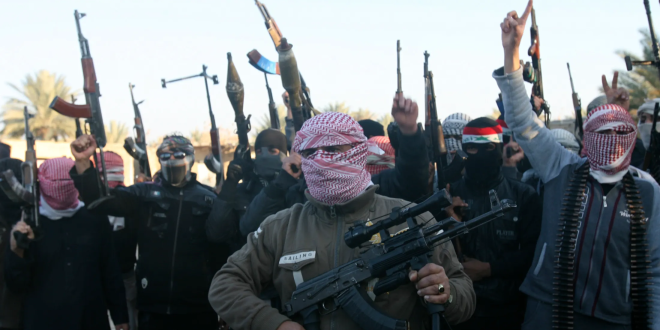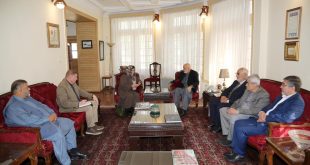AT News
KABUL – A UN report has sounded an alarm regarding the transfer of NATO-calibre weapons left in Afghanistan to the Islamic State terrorist group with the help of regional militant outfits including Tehrik-e Taliban Pakistan. The report highlights proliferation of NATO arms following the Taliban’s takeover in 2021.
In his 17th report on ISIL’s threat to global peace and security, the United Nations Secretary-General Antonio Guterres has expressed worries regarding proliferation of weaponry across Afghanistan, the Middle East, and Africa, especially the access that Da’esh and its regional affiliates have gained to small arms, light weapons, unmanned aircraft systems, and improvised explosive devices.
The recent takeover by the Taliban has amplified concerns, with a surge in weapons and military equipment within Afghanistan and spilling into neighboring countries. Notably, groups linked to Al-Qaeda are funneling North Atlantic Treaty Organisation-calibre weapons to ISIL-K. These groups include Tehrik-e Taliban Pakistan and the Eastern Turkistan Islamic Movement (ETIM/TIP), also known as the Turkistan Islamic Party.
There are reports that Da’esh or the Islamic State has established an industry committee to explore advancements in weaponry, including improvised explosive devices and enhanced drone payloads.
The report underlines that ISIL-K now poses the most significant terrorist threat in Afghanistan and the broader region. The group has bolstered its operational capabilities within Afghanistan, estimating 4,000 to 6,000 fighters and family members. While Sanaullah Ghafari (alias Shahab al-Muhajir) is seen as an ambitious ISIL-K leader, his reported death in June remains unconfirmed. Mawlawi Rajab is identified as the head of external operations for ISIL-K.
ISIL-K has adopted a more sophisticated approach in targeting both the Taliban and international objectives. High-profile attacks serve as a strategy to undermine the Taliban’s security efforts. These attacks exhibit robust operational proficiency, including reconnaissance, coordination, communication, planning, and execution. Some UN Member States suggest that targeting influential Taliban figures in Balkh, Badakhshan, and Baghlan provinces has boosted ISIL-K’s morale and recruitment.
The report highlights growing links between ETIM/TIP and ISIL-K, as evidenced by joint propaganda efforts and some ETIM/TIP members participating in ISIL-K operations. There are concerns that certain elements of Al-Qaeda in the Indian Subcontinent might be inclined to join or cooperate with ISIL-K in the future.
 Afghanistan Times
Afghanistan Times




